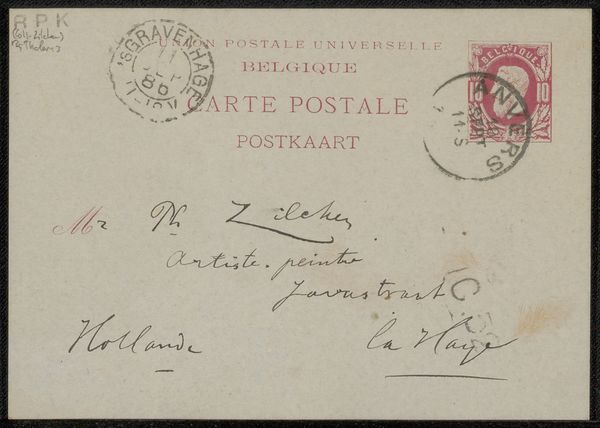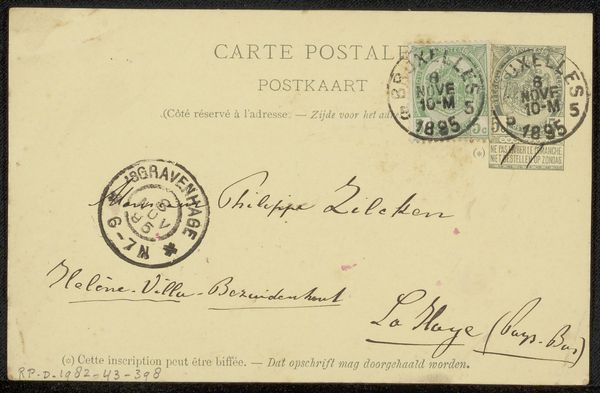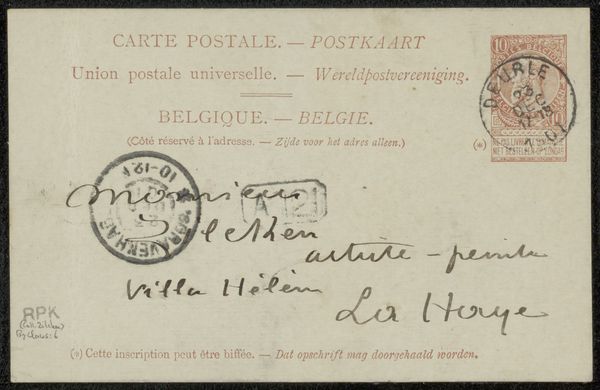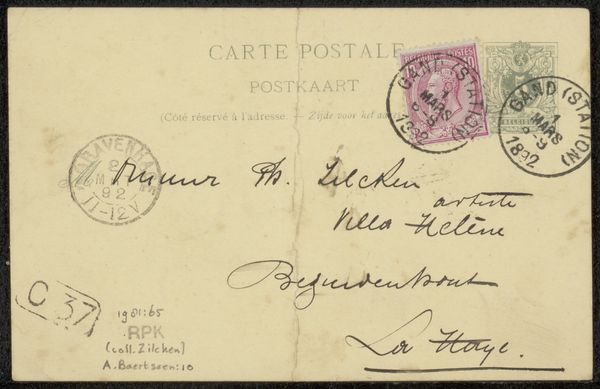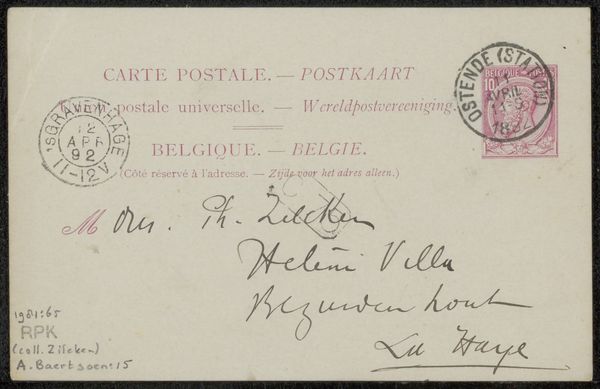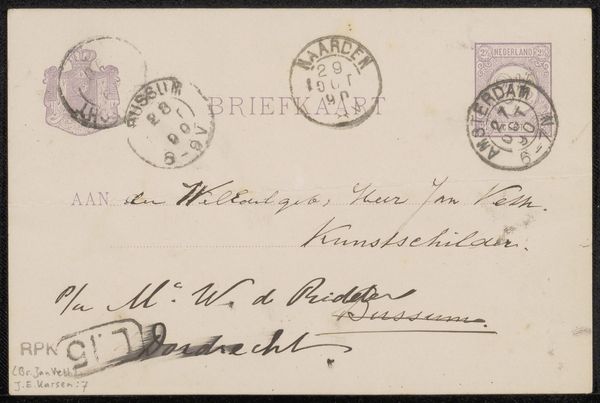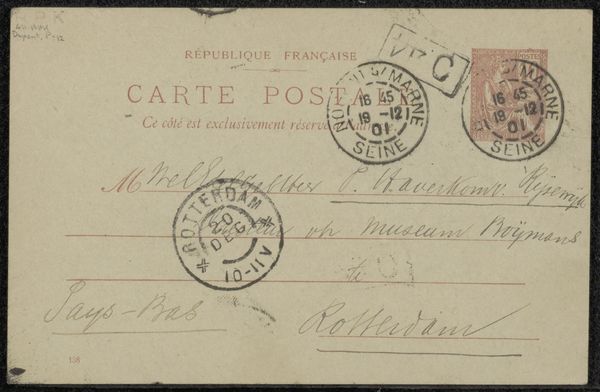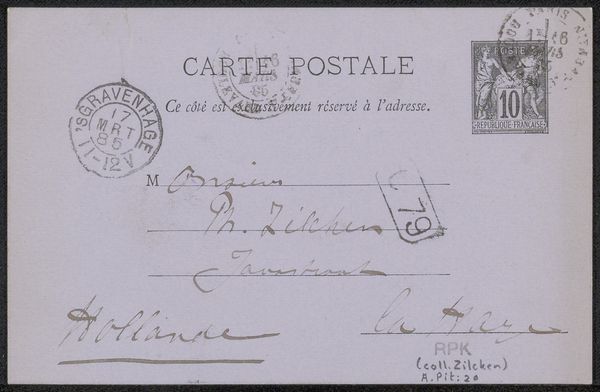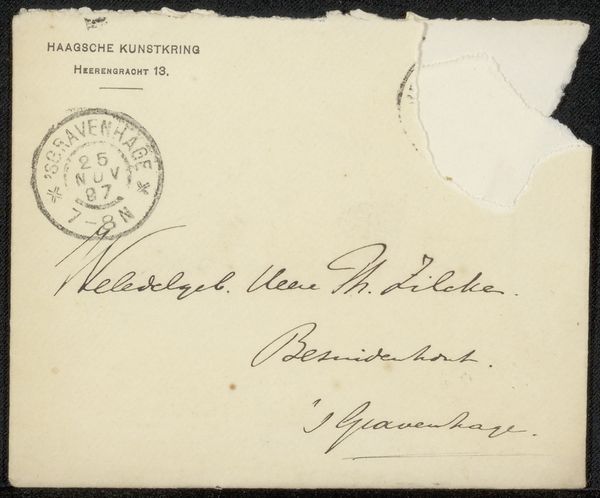
print, paper, ink
paper
ink
post-impressionism
calligraphy
Copyright: Rijks Museum: Open Domain
Curator: Looking at this artwork, titled "Briefkaart aan Philip Zilcken," dating from before 1888, I’m immediately drawn to the elegance of this old postcard. There's a beautiful simplicity and also mystery in how the daily chore can still inspire. Editor: It has the wistful ghostliness of things past. It feels incredibly intimate to see this communication, decades later—like stumbling across a faded photograph. What particularly grabs me is the layering of time impressed physically onto the card: the stamps, postmarks, handwritten address all pointing to the postal processes of late 19th century communication. The artifact speaks to how social and industrial systems have enabled connectivity, particularly for literate classes with capacity to correspond by mail. Curator: Precisely! And the fact it's ink on paper is something. These were carefully crafted objects with function and artistic expression, despite their utilitarian purpose. You notice that the materials itself—paper, ink, and print—played into this. Think of all the labour involved in that. And each pen stroke seems laden with intent. Editor: You can really feel the individual handwriting – it gives such a human element compared to emails now. It speaks of both considered messaging in this style. Though even then the standardization is creeping with the printed postcard and its "carte postale" heading. Curator: Absolutely. This blurring is intriguing. On one hand, you have industrial standardization and efficient systems represented by the stamp and the printed headings; then there's the deeply personal quality of handwritten script with it's unique cadence. Both exist on the same material object and they speak to different but also interlocking social relationships. It’s like a tiny material echo of its time. Editor: I completely agree. To add to the personal aspect: I can't help but feel curious about Zilcken himself. I want to know the context of this communication and relationship. How did this slip of paper and ink once connect real people to each other, in their separate lives? It really makes me think about how material and process influence my interpretation of art and how the past affects our present.
Comments
No comments
Be the first to comment and join the conversation on the ultimate creative platform.
